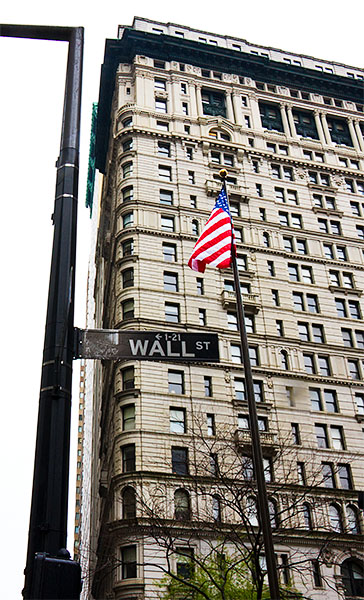
What is economics for? It’s often characterised as being about the choice between ‘guns or butter’. This choice is one not only about which we want to consume, but also about which we want to produce. Strangely, the dominant neoclassical paradigm attempts to render this a choice that need not be made, since it proposes the possibility of an entirely voluntary and stable production and trading outcome (equilibrium) that cannot be bettered. Or at least it cannot be bettered in the sense that no change is possible without making somebody worse off.
This process was described by the ‘father’ of modern economics Adam Smith as being an ‘invisible hand’ that brought about the welfare of all through the self-interest of traders, and that this is possible with markets and a set of prices for goods has been proven mathematically. It forms the basis of an approach to economics that starts from the position that in the absence of identifiable forces shifting things in the other direction, the economy will tend toward the ‘equilibrium’ outcome. In the apparent absence of a way of establishing the relative merits of individuals’ claims against each other this outcome is the best we can or should aim for, and so provides a justification for doing everything we can to remove any forces that might prevent this equilibrium being reached and maintained. These forces include lack of access to well-functioning markets for all sorts of goods, services and assets; lack of a reliable medium of exchange (money) to make trading more efficient; and lack of a system of law that can deal with the disputes in trade that must inevitable arise. Dealing with these barriers to trade is fairly neutral in its effects – favouring (at least in principle) neither those that start off wealthy, nor those that start off poor. But then things become more tricky. Markets need strong rights of private property – since you cannot easily sell what is not certainly yours, and there is not much point in buying what you cannot hold on to – but as soon as such law is enacted and enforced it must inevitably freeze in position the status of the current patterns of wealth however they were achieved. The interference of governments and other bodies, whether as regulators or players in the market and whatever their legitimacy on other grounds such as democratic processes, is generally to be avoided, discouraged and diminished.
It is unsurprising that a system that regards pre-existing wealth as having arisen by voluntary agreement and enshrines its protection in law should be one that has a particular attraction to those individuals that are already wealthy, and whose benefits might be overstated by them. This overstatement takes the form of accepting the market outcome as the default position – to be only interfered with if the political case (read risk of rioting on the streets) becomes severe enough. In fact there are several reasons to suspect that this is entirely the wrong approach, and that while the right to free exchange of one’s goods and labour is an important and valuable one, it does not trump all others.
To find one’s way to the theoretical riches of the market one needs accurate information about oneself, the interaction of one’s market decisions with those of others and about the future. The supremacy of the market outcome also depends on equality of market access and power in terms of wealth and resources and the ability to trade on my own account any positive or negative ‘good’ that might affect me. Any failure in the first group of assumptions tends to be magnified through any failure in the second. A profit made from a lack or asymmetry of information can be used to consolidate a position in the market that can be used to leverage further profits. Add a leakage of economic power into the political sphere and the theoretical equilibrium becomes a rapidly widening inequality of wealth and power.
Economics and economists are individually often aware of these flaws in the market system, but they have developed a series of ‘tools’ that allow mathematical analysis. Unfortunately, most of these tools simplify equilibrium analysis by removing the real world problems that make true equilibrium unlikely and in any case most unlikely to represent a meaningful peak of welfare. These tools include ‘revealed preference’ – the assumption that actual choices always represent best options; ‘the representative agent’ – a single individual to replace complex social and trading interactions; simplified responses to price changes and assumptions of ‘perfect information’ and perfect knowledge of the future. While many of the models thus constructed are interesting and give insights into particular economic phenomena, they cannot hope in themselves to provide complete answers to the problems of how we should organise our economy or society. In the absence of a feasible welfare-maximising equilibrium, the second-best solution may well NOT be to remove as many barriers to ‘free’ transactions as possible.
2 replies on “What is economics for? Part 1”
Well, you’ve given reasons to think of economics as less than great. The economy does not function in any ideal way. It’s a lash up: an old vehicle – a horse-and-carriage – which has over the years had an engine added, new wheels fitted and other modifications, as well as several new owners. There’s nothing streamlined and new about it. Good stories are told about self-interest, complicated production processes which achieve the miracle of full supermarket shelves everyday, continuous innovation, comparative advantage and so. These are supposed to be less profound than mathematical formulations.
Hi Tom,
Thanks for that.
I think your characterisation is pretty accurate! Maths can be useful, both in discovering new implications and showing up logical inconsistencies, but it can’t be the focus. The focus has to be people and what they need and want. Look out for Part 2!
I’ve just started blogging on the Renegade Economist site. See http://www.renegadeeconomist.com/blog/what-sort-of-economics-do-we-need.html